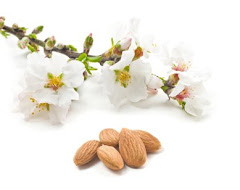
Advertisers have seized on the links made with omega-3 and brain development, to the extent that parents with young children can worry that, if their children are not eating fish and/or taking cod-liver oil tablets or consuming products fortified with omega-3 (even bread) they'll never get into their nursery school of choice...

The fatty acids group called 'omega-3' is certainly essential for our bodies. Experts believe that a lack of long-chain omega-3 essential fatty acids in our brain tissue can lead to neurological problems, and supplementing our diet with omega-3 can safeguard against this. This is supported by a study led by Pascale Barberger-Gateau, reported in the Journal of Neurology: 'Eating a diet rich in omega-3 oils may significantly reduce a person's risk of developing Alzheimer's disease. In a study in France, 8000 people aged over 65 - all in good neurological health at the start of the research - were questioned about their diets. Four years later, 183 of them had developed Alzheimer's and 98 another form of dementia. The reseachers found that participants who had regularly eaten omega-3-rich oils, such as flaxseed oil and walnut oil, were 60% less likely to have developed dementia than those who had not. Omega-3 also lowers the total amount of fat in the blood, which keeps blood pressure down. So, omega-3 is good for the brain and heart.
The good news for the raw vegan or vegetarian is that omega-3 is contained in many plant foods, such as dark green vegetables (like spinach and broccoli), walnuts, hemp seeds, pumpkin seeds, sesame seeds and wheat, but one of the very best sources is...flax seeds (also known as linseeds).
When I went raw I was surpised to find that my beloved olive oil, that I had drowned my food in for most of my adult life, just didn't taste so good any more. Although I do still enjoy it in some dishes (eg kale and avocado salad) I now greatly prefer the taste of flax oil, made from flax seeds.
I came up with this salad after enjoying the leaves with mango in a 'green smoothie':
Rocket and mango salad
2 cups of young spinach leaves, torn
2 cups of rocket (US - arugula)
1 ripe mango, peeled and cubed
1/4 cucumber, finely-chopped
1 tbsp whole sesame seeds
1/2 tbsp flax oil
Combine all ingredients.
Here's a recipe from one of my favourite raw food books, 'Sunfood Diet Success System' by David Wolfe:
Orange and Flax Energy Drink
Blend:
5 oranges
3 tbsp flax seed oil
'Peel the oranges, but maintain the nutritious white pith...Blend the oranges and flax seed oil together. Do not remove the orange seeds as they are nourishing and contain anti-fungal qualities. Drink slowly. The fat in the flax oil allows the sugar in the oranges to release slowly over time. This provides excellent energy over several hours. This is a particularly beneficial blend to drink before a business meeting or as a starter in the morning.'
Is flax oil expensive?
Yes! As all the best oils are. It can be bought at supermarkets, health food stores, and on-line. Three brands I've tried are Tesco (Linusit), Waitrose (Granovita), and Stone Mills. The Tesco and Waitrose oils are around £5. The Stone Mills is £9.50 (300ml).

Is it worth paying almost twice the price for Stone Mills? Yes!!!
Having tasted all three, I can tell you that the Tesco brand tasted unpleasant, with the flavour bearing no resemblance to the flax seeds it was (apparently) made from. The Waitrose brand was 'OK' - I could tell it was flax oil. But the Stone Mills flax oil is so delicious that I really can drink it from the bottle. I think it tastes of ice-cream, but then I'm a bit odd...suffice to say it is head and shoulders above the cheaper brands taste-wise. Stone Mills say that their flax oil is 'pressed at temperatures below 40 C (105 F) which is less than half that of some other oils. Pressing oils at higher temperatures reduces the availability and efficacy of the delicate omega-3 oils.' (I'm thinking that maybe this also accounts for the superiority of the flavour - note that some oils that say 'cold'-pressed are actually pressed at 160 F plus). So - not all flax oils are the same. Stone Mills is available direct from the manufacturer - Stone Mills, or from Funky Raw, or The Raw Greek (P/P free in each case).
And if you find it difficult parting with £9.50 for such a wonderful oil, that will almost certainly last before you've finished it all up (keep it in the fridge), think how much, pre-raw, you might have spent on a takeaway, and how much that would have contributed to your neurological development (or not)...



 4. Cucumber
4. Cucumber















